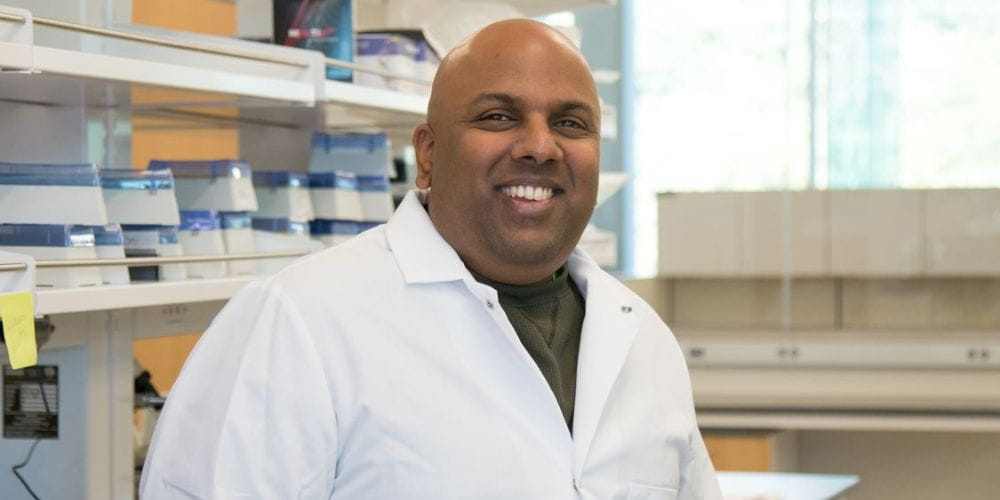
A University of Texas at Arlington faculty member will use a $2.3 million, multi-institutional federal grant to help harness the healing power of semiconductor nanotechnology.
Venu Varanasi, associate professor in the Bone-Muscle Research Center in the College of Nursing and Health Innovation, is developing semiconductor biomaterials to help speed up bone healing in patients suffering from cranial bone defects.
The project is a collaboration with UTA researchers Marco Brotto, director of the Bone-Muscle Research Center, and Pranesh Aswath, professor of bioengineering and senior vice provost, both of whom Varanasi described as his mentors. Scientists from UTHealth Houston, Rice University and UT Southwestern Medical Center are also contributing to the project.
There are typically two treatment strategies used for cranial bone treatments, each with its own drawbacks, Varanasi said.
- The first involves inserting a titanium plate over the injury area for new bone to grow over. A drawback is that this process is slow.
- The second involves the use of a gelatin-like material that degrades over time, allowing the new bone to take over the space. But the substance may degrade too quickly, not allowing enough time for the new bone to form.
Varanasi and his team hope to develop a new material that can help speed up and standardize the amount of time it takes patients to heal.
"Our project is to make some new materials that can improve the healing rate for the fixative implants and improve the stability of the degradable materials so the bone can generate faster in both situations," he said.
Varanasi's focus is on the use of a semiconductor biomaterial that induces a healing effect and minimizes immune responses and inflammation.
"We're using a particular material that can be found on a microchip and putting it as an implant coating onto fixative devices or as a nanoparticle in the degradable materials," he said. "This will help push antioxidant activity, which can help produce bone and vascular tissue that are required to heal the entire bone gap."
Varanasi said this new approach was inspired by previous research involving plants and the element silicon, which spurred the production of enzymes that helped the plants survive traumatic conditions such as drought.
"I started producing data and found out that just like plants, mammals and humans produce the same type of enzymes," Varanasi said. "No one created the link between the silicon ion and antioxidant mechanisms in mammals until our project."
To develop the semiconductor biomaterial, Varanasi is collaborating with the Shimadzu Institute Nanotechnology Research Center and the UTA Characterization Center for Materials and Biology.
Varanasi acknowledged critical contributions from former doctoral students who helped him obtain needed data for this large grant. They include Kamal Awad (materials science and engineering) and Neelam Ahuja (kinesiology). He also noted the support of UTA's Office of the Vice President for Research and Innovation and Leticia Brotto for her assistance in student and trainee mentoring.
***
This research was supported by the National Institute of Dental & Craniofacial Research of the National Institutes of Health under Award Number R01DE031872. The content is solely the responsibility of the authors and does not necessarily represent the official views of the National Institutes of Health.






